According to the ‘Defence Command Paper’, the UK is looking at ‘Multi Role Support Ships’ to provide future littoral strike capabilities, but what will they look like?
The Defence Command Paper, titled ‘Defence in a Competitive Age‘, describes the planned acquisition:
“Multi Role Support Ships (MRSS), to provide the platforms to deliver Littoral Strike,
including Maritime Special Operations, in the early 2030s.”
An inside source that asked not to be identified had last year attended a briefing at the Commando Training Centre, also known as CTCRM, discussing information relating to future UK amphibious and littoral capability
I was told “LSS and FSSS likely to be sacrificial lambs at forthcoming review in order to get MRSS in larger numbers”. “Ellida will require some tweaks but would appear to reflect the requirements of littoral strike and needs of Carrier Strike”, the source added.
It appears that the source was largely correct, the plan for a dedicated and standlone ‘Littorial Strike Ship’ (LSS) was abandoned whilst the Fleet Solid Support Ships (FSSS) stayed. The deletion of a larger LSS in favour of smaller but more numerous MRSS vessels fits with current views, “thinking is larger number of smaller targets”, I was told.
“It’s a solution that fits the new doctrine. LSS was going to be a 40,000t conversion of merchant ship, big poorly protected target.”
What is Ellida?
The ELLIDA concept is a 195m multi-role support and logistics vessel designed to provide the capabilities needed in “future global operations, offering the flexibility of a large hull, with internal vehicle and stowage decks, weather deck stowage and additional accommodation”.
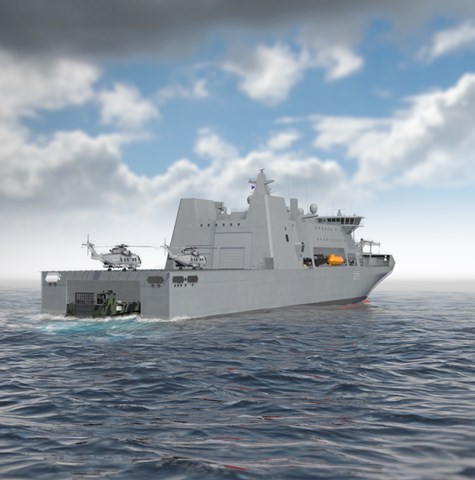
It has the utility to transport and deliver troops, vehicles, equipment and supplies from anywhere in the world in support of amphibious warfare and littoral manoeuvre.
Its mix of ship-to-shore offloading and logistics capabilities allow support to naval operations through landing craft, boat operations, multi-spot aviation and replenishment at sea.
According to the BMT website:
“The first member of the ELLIDA family is a 195m multi-role support and logistics vessel designed to provide the capabilities needed in future global operations, offering the flexibility of a large hull, with internal vehicle and stowage decks, weather deck stowage and additional accommodation. It has the utility to transport and deliver troops, vehicles, equipment and supplies from anywhere in the world in support of amphibious warfare and littoral manoeuvre.
Its versatile mix of ship-to-shore offloading and logistics capabilities allow support to naval operations through landing craft, boat operations, multi-spot aviation and replenishment at sea.
BMT considered the operational background and future requirements during the development of ELLIDA – including the development of operational concepts against current and future doctrines of several navies. The result is a balanced design, able to react to the dynamic operational requirements of military commanders in support of government policy for a number of different nations.”
Below are the specifictions.



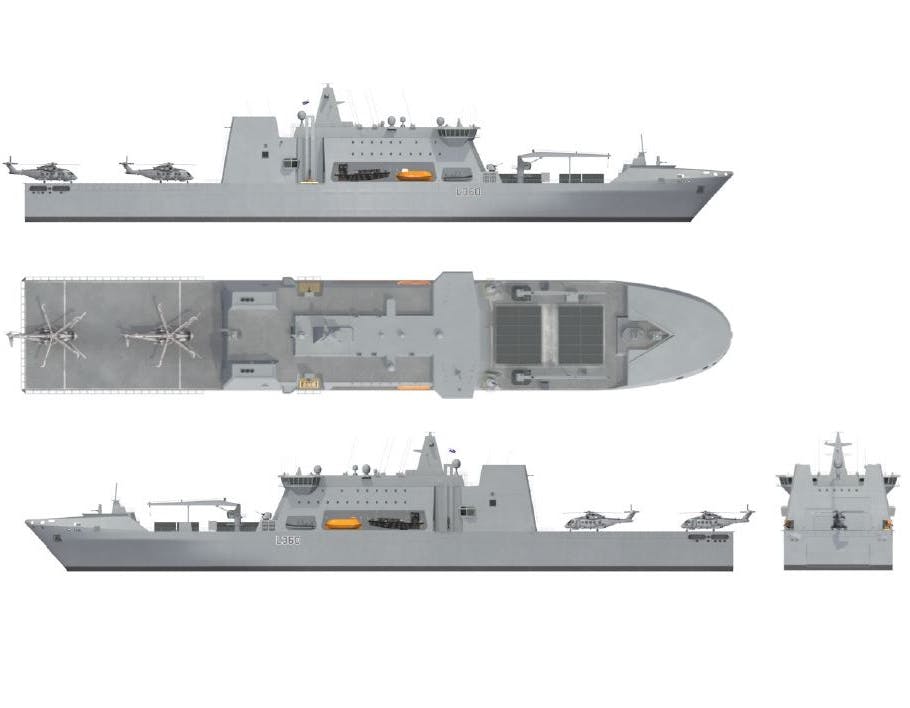
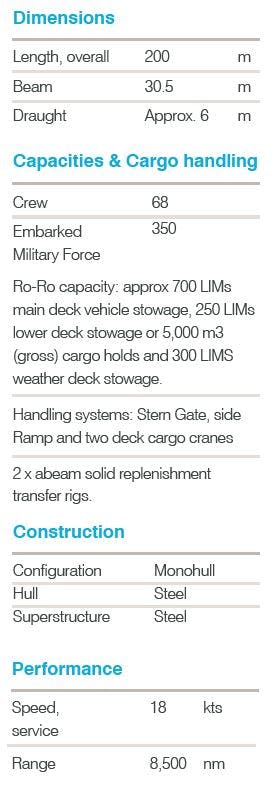

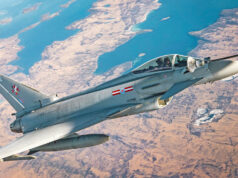
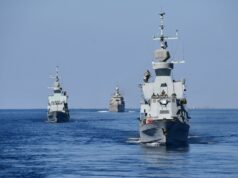
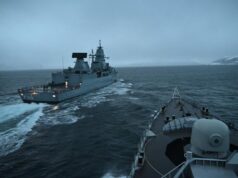
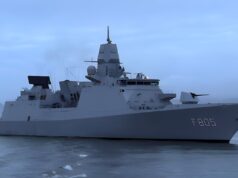
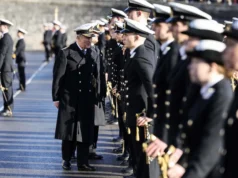
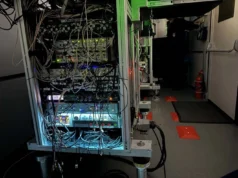
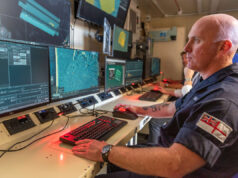
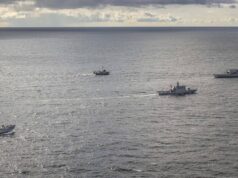


This to me looks like the way forwards. If amphibious raiding is the model that the RM, SF and elements of the Army think is the future, then this is a brilliant way to maximise amphib capability. A decent number of these (say 6) would make it very hard indeed for an adversary to protect their coasts
There was talk of 2 LSS and 3 FSSS, so I’d imagine we’d get 4 or 5 of these. It would still be excellent news mind.
hey Rob
ultimately the bays (3), bulwark (2), forts (3), Waves(2), Argus (1) and the Points (4) all need replaced at some point over the next 20 years.
We could replace all with these vessels and come up with some containerised solutions for additional stores capacity using the lane meters when not taking vehicles.
so a fleet of 15 MRSS should be the target, this would drive efficiency and reinvigorate the yard (CL would be my preference so they can build a carrier size dock for refits).
Hi Pacman,
The article did say that the FSSS as been retained in the plans so at least some of the replenishment capability is already being taken care of, so perhaps 6 MRSS?
Cheers CR
I think we will need more
the RFA have 13 ships (4 Tides, 9 others) and the RN 2 amphibious.
so realistically I think we can definitely order 9 and with economies of scale 10.
We should assume a drumbeat of one 200m ship every 2 years so over 30 years that would be 15.
If we get this design right I think there is a massive export market for it, especially once people see the RN using it in innovative ways.
maybe I am too optimistic but I do think this is the type of ship we need with Ship 2 Shore connectors replacing LCU’s (there are always compromises).
I think you are right – the ambition is pretty clear now when you pull it all together – replenishment is now separate again, covered by FSS, Tides etc.
MRSS looks intended to cover all of Landing/Strike plus all the usual HADR/Mothership roles like Bays do at present.
So 6x MRSS based on Ellida is about right because it’s roughly equivalent to replacing Albions, Bays and Argus, both in total landing capacity and number of ships.
I suspect HMG may be deliberately avoiding being so specific though – because they don’t want to set expectations (that may need to change) around a particular design or yard, which is not unreasonable given the politics that exist around shipbuilding & procurement.
as most will know I am a big advocate of the Karel Doorman Class, and would now add the Canadian GLAM concept to the list.
Everything has limitations, but the KD seems to balance those limitations better than most and The GLAM concept adds some key armaments and an icebreaking hull and I am sure we could improve further by extending the hanger around the fuelling rigs and adding a wrap around 2nd floor for all thing air and refuelling. which is relatively inexpensive but adds space where its currently wasted.
We can definitely order 10 of these ships if we so desire on a 1-2-1 replacement and with a fleet this size it gives us loads of options
If we wanted to be really innovative, a fleet of 16 FLO-FLO’s with mega modules would not only be really cost effective but would in essence be the Boxer of the Sea’s (take a look at think defence articles on this solution).
the KD cost £400m, but if we built 10 in the UK we could probably cut this down to £300m due to scale. its a lot of money, but not if we launch one every year.
and that’s the key here, a good tempo and steady drumbeat with certainty of orders, instead of famine and feast.
I like the idea of these ships. I saw Navy Lookout was floating the idea that 6 would be procured, but does anyone know whether numbers have actually been stated in any of the recent MoD releases?
I think we have to front up to the idea that these may replace the Amphibs and Bays. I think the MoD has come to the conclusion that assaulting beaches at the Brigade level is no longer realistic.
On that basis, I think these ships reflect the intent to transform the Royal Marines from a small independent fighting force, to a large pool of highly trained special operations units deployed from the sea.
The Defence Industrial Strategy refers to up to 6 MRSS. I don’t understand why it takes 3 or 4 separate reports to set out clearly our plans. It could all be condensed into a shorter single document.
Personally, I’d also design in the ability to turn them quickly into hospital ships. They could be used for humanitarian support in future health emergencies. THe idea that they can be multi role would fit well with that idea, and there wouldnt need to be that much adaptation needed, especially with modern plug and play containerised spaces etc
both KD and GLAM have inbuilt hospitals and theatres and the 2000 lane meters in a KD can be turned into whatever you like with the right containerised solution.
Given FSS appears to be going ahead as a stores ship in support of the carriers, of which we can assume 2 (not 3) will arrive, and given the sheer size of the requirement will be quite large enough ships in their own right just to do that, this new MRSS will effectively replace the 3x Bays (original and interim LSS) and Argus (if that survives).
The Points will endure as they are happily and efficiebtly employed as cheap RoRos moving kit from A to B so at a future point (hah!) a like for like.
For MRSS, a ship with a dock (lack of being a key weakness of the LSS concept often shown), lots of accomodation and a large flight deck and hangar (LSS had this forward which I disliked given the resulting hangar englvironment) would seem to meet this.
Hence the Elida concept discussed above.
I think we need to avoid over burdening it with extra complexity and cost and people so bin off refuelling.
Concern is there appears to be no plan to replace the LPDs, which appear to be forming the “western LSG” with the cheaper to run Bay providing eastern – unless MRSS does it all. I’m bothered that we are still not going down the LHD route that every other nation has identified is the answer for amphibious forces, and this feels a bit like the 80s where Argus/Reliant were genuinely thought as successors to LPHs and LPDs. Given we have abandoned large anphibious ops, there seems no impetus for the warship/larger end of this spectrum. Elida seems a “2nd rate LHD” compared to say Mistral or the new Italian ship, Turkish, Australian and so on, not to mention US and Chinese concepts in this field.
I think a Karel Doorman with its inbuilt LCU’s and a couple of S2S connectors operating off its stern beach is probably good enough for most of our requirements.
Plus its hanger can hold 6 Merlins (more if we designed the bit around the RAS rigs a bit better.
I think we can do better than Elida, KD and GLAM with a bit of good old British ingenuity, but for me the KD is the benchmark we should aspire to refine and improve.
KD doesnt have LCUs, it has LCVPs.
It is almost entirely irrelevent to our requirements, they are:
– dock to flexibly carry and operate LCU/LCVP/ORC/ SF boats, allied vessels etc.
– embarked forces accomodation for say 250 troops and supports.
– extensive aviation facilities.
KD offers huge lane space (not needed), large aviation (tick vg) and limited liquid (not solid) replentishment.
It has no space for an embarked force (all its accom goes on crew and aviation wing) and no dock.
If you have 2 ships with lots of troop and dock space but want more sealift lane metres and aviation plus you dont have many seperate replentishment ships, then KD is ideal. That is why the Dutch built it. Even then they put it up for disposal ahead of their (older) LPDs, saved due to fudge with Germans. I’d see it as having been a candidate for the old “Joint Sea Based Logistics ship” requirment as a flexible hull space, some water interaction (beach) and a flexible hangar space plus large open deck and some associated accomodation – and my fantasy RN has one doing that – but not relevant to reality.
If you are looking to replace say 2 LPDs, 3 LSD(A)s and a PCRS, characterised by dock space and embarked forces accomodation -neither of which it has, then it is wholly the wrong ship. Which is why it never features in anything the RN does put out.
Elida is a much more interesting concept combining dock, aviation and embarked forces. If this project stays as a MRSS Auxiliary then something like that may emerge.
Whether it has any replentishment capability (solid and/or liquid) is a difficult call – that adds cost and complexity and I’d prefer to ensure it has the triad of dock/aviation/troops first and foremost, but could be nice to have if we start really operating as “LSS + frigate”, although I suspect port (hub) visits and a regional Wave/Tide (Waves likely to be replaced by a larger tanker dedicated to carrier demands) will suffice.
Here in Oz HMAS Choules (former Largs Bay), will be replaced with two Joint Support Ships:
https://www.navalnews.com/event-news/pacific-2019/2019/10/pacific-2019-navantia-australia-unveils-joint-support-ship-design/
Above is the Navantia Australia offering, based on the ‘Enforcer’ hull, I would imagine that Damen will also come up with an offering based on the Enforcer hull design too.
I wonder if the MRSS could end up being something similar?
Cheers,
I would bite your hand off for six of those right now at circa 20,000t.
They “hope to” keep the crew under 160, whereas the Ellida is just under 70. I think that would be a deal-breaker for the RN.
crew is totally dependant on activities, helicopter and amphibious tasks will need more people as both are dangerous environments to work in, pure replenishment is perhaps closer to 70
I would take any number below 300 with a pinch of salt.
They look pretty smart and what is needed as Bay replacements.
For Albion/Bulwark two actual LHDs like the Canberras.
I’ll not hold my breath 🙂
Those ships are based on the The Galicia class landing platform dock (LPD) ships in service with the Spanish Navy and built by Navantia in Ferrol (Spain). https://en.wikipedia.org/wiki/Galicia-class_landing_platform_dock
The Australian LHDs (“Canberra” & “Adelaide”) were also built in Spain. They’re based on the Juan Carlos I LHD class, also in service with the Spanish Navy.
Turkey is building another LHD of the same kind “TCG Anadolu” also with Spanish design and support. https://en.wikipedia.org/wiki/TCG_Anadolu
They were purchased by the RAN together with a package of LHD Landing Crafts and the design and construction support for 3 Hobart-class destroyers in Australia (based on the Spanish F-100 frigate design). The contract included Navantia’s technical support to the Australians to help them to develop their shipbuilding capabilities.https://en.wikipedia.org/wiki/Hobart-class_destroyer
Australia’s future Landing Helicopter Dock (LHD) “Canberra” http://www.defense-aerospace.com/articles-view/release/3/137771/first-australian-lhd-sails-home-%E2%80%93-on-ship.html
Broadly, this makes some sense to me- only as long as they can provide sufficient stores to a CSG; what is the capcity difference in the solid stores factor between one of these and the projected FSSS? Also, is there a difference in how quickly they can be transferred? If 2 are required to support a CSG instead of 1 FSSS, then I’m not necessarily against it- one can be replenishing in port while the other is replenishing the fleet. But manpower is a big limit on us, so I’m not sure that double the hull numbers will make crewing vessels very easy- even if they’re RFA…
people tend to forget about the lane meters in this type of vessel, ultimately that is a space that can (with containerised solutions) become very flexible and for solid stores is the game changer.
not sure why we need a dedicated SSS, when everything on it can be stored in a container or pallet and for the items that cannot we just build in that flexibility. but refrigerated containers etc are not hard to come by and actually are probably logistically easier to load onto the ship as well.
getting the ammunition and fuel stores right is the trickier piece here
Explosive storage is not something you are going to containerise or put in the lane metre space. The regulations for explosives are vast, and like so many, written in blood.
There are some videos out there showing how Lewis&Clark, and Fort I/IIs are arranged and how they operate – stores holding, transport and transfer is a specialised world and be very careful making any judgments on the telescope viewpoint of seeing a pallet or container.
Its just completely incompatible hence why AOEs were seperate ships for a long time and why FSSS is a seperate requirement.
Fair point, maybe my concerns on the first point are not something to worry about. I would just out of interst like to know the capacity different though.
On the other point, about stores delivery, there just didn’t seem to be many routes for bringing those stores up to deck while under way, but maybe that’s something for the design phase.
As far as fuel and ammo go, there will certainly be fire and battle damage considerations to run through. But aren’t these supposed to be handling solid stores only, so fuel wouldn’t be a factor? unless you mean for the more amphibious side of things rather than the resupply of the CSG? That is something to consider, I believe that these days wine is often shipped from country of origin in large containerised bladders (very similar to a 40 foot wine box) for bottling at destination. This saves a lot of weight of shipping by doing away with the glass for most of the journey. I can imagine that a similar containerised fuel bladder is feasible if not already in existence, you could have a few on the vehicle deck and run refueling ops from them?
I think the 2 Solid Support ships for the carriers are a certainty, its what we do with the multi roll support ships.
Take a look at wikipedia, for what it is the KD is pretty amazing. I know there are trade offs (no well deck – so use S2S connectors instead) and perhaps we forgo something to increase ammo stores, but food, water and even fuel can be containerised and utilise the lane meters.
I just think there is a really good example of doing this well and we should learn from it. After all the bays are a dutch design as well.
I like parts of both the KD (sheer breadth of capability) and the GALM, some refinements to the hull and weaponry but think we can do even better. It will be tough but hey I think we have the skills to come up with some great innovations.
Devil is always in the detail, but I would rather have a fleet of these constantly in use and very saleable, than ships that are tied up and open to scrutiny from the bean counters as they are too niche.
It’ll be years before they are built and ready, though; plenty of time to recruit.
Very true, but we can’t crew the 19 escorts that we currently have, and I presume that the RFA Forts that are tied up alongside at Liverpool don’t have crews either. Increasing the escort fleet to 24, while at the same time increasing the RFA fleet by perhaps 3 or 4 sea-going hulls, is a lot of skilled sailors to be recruiting and retaining! It’s widely considered that the accomodation and other facilities are currently not up to par for the numbers we have, so it’s going to be hard work (and cash) to get that sorted with an increase in capacity.
I think a crucial difference is that safe ammunition storage isn’t catered for in the ELLIDA design, but will be in the FSSS. Unless this is changed, the FSSSs will still be needed, but perhaps only two of them.
I think 3 were envisaged with 2 supporting the carrier and amphib task groups, and 1 east of suez like Fort Vic was.
Given how LSS and now MRSS have come along I think the Fort Vic aspect will fall under them as it was more about having a platform for a staff, some SF, good helo spqce (2-3) than it was as a replentishment ship although it did carry ammo for the T23/45 usually deployed out there (gun and missiles).
That is pretty crucial, even with the wider use of inert warheads (I think that’s the right term) and suchlike!
Well at 200m this still not that small. Where is the money for it?
The same question could be asked for every other new addition announced.
We’ll announce 6, order 4 and end up with 2.
unfortunately correct
I have thought for some time that ships like this are the way forward, so glad to see MRSS under consideration again. Cannot see the LPDs being replaced like-for-like so my guess is that something along these lines will replace all 5 current amphibious ships plus Argus. It will be interesting to see what they come up with.
I viewed the announcement with mixed opinions.
the much needed challenger tank upgrade good news. Only 148 Bad.
Continuing the development of the Typhoon good news , especially ECAPTOR . . The reduction in favour of unproven loyal wingman tech Bad!!
Better equipped Army Good. A even further reduction In numbers Bad. There is no substitute for boots on the ground.
increase in the Destroyer/ frigate numbers Good but how many will be able to be able to look after themselves in high threat environments.?
And it still doesn’t answer the sudden interest in EMALS type Cats and traps. Is the intention to outfit the carriers with them?
revival of Military R&D very welcome. We used to have the excellent DRA but it was sold off. You can thank them for Flat screen tech!!
in fact properly or at least better funding for R&D is good as long as it appreciates the place of blue sky thinking !!
IMO people are still thinking in terms of platforms that are much too large and that includes the Ellida. They are also picking platforms designed for a time when the only wars we envisaged fighting, or thought likely, were counter insurgency. Even if we did consider larger wars, the ships were designed at a time when threats were significantly less in both capability and numbers than today’s and tomorrow’s much more sophisticated weapons.
Whatever platform is chosen for the MRSS has to be viable operating off the NW coast of Norway or perhaps in the Baltic in a hot war with Russia, which means targeted by AIP subs and the full range of missiles from sub-sonic, to hyper-sonic in future. We have a clear commitment to both Norway under NATO and also to the UK JEF. If we need to provide reinforcements then the capability needs to be credible as a deterrent. Clearly we will have escorts to defend them, but we shouldn’t make losing a single ship a mission kill, which would be the case today if we lost an Albion class vessel in such a context.
That drives a small, flexible, cheap and fast platform.
The most critical requirement IMO is to have a vessel that is not tied to using a RO-RO port facility, or having to use its dock with landing craft for slow overall ship-to-shore ops. Both of those make a vessel vulnerable to targeted attack.
So that drives a vessel with beach landing capability (in addition to RO-RO), which makes it much harder to predetermine where it will land and how long it will be beached. But because we aren’t doing opposed landings we can build the ship to commercial standards with a 15-20 year life, and then sell on, with target markets such as governments or commercial ferry operators in poorer nations. This would mesh well with the NSS for UK shipbuilding.
The Damen LST 120 is a first order proxy for this type of vessel, but there’s plenty of scope to look at different design options, such as a superstructure-forward stern-landing vessel, which might be better suited to faster speed and better sea keeping/higher sea state capability. The MRSS might actually be somewhat larger to support more roles, say in the 4,000+ tonnes displacement but certainly no larger than 8,000 tonnes IMV.
As an illustration of flexibility, davits could support many different roles beyond landing craft, either within an amphibious operation, or another mission entirely such as MCM, or littoral ASW using USV and UUV. Or deploy such vessels from under a flight deck, in order to support a greater lily pad aviation capacity.
In peacetime, it takes on the Point class role, serves as a HADR vessel in the Caribbean and supports MCM mothership role in the Gulf and elsewhere. It could be equipped with container based casualty receiving/hospital capability in peacetime as well as in war time as a supporting element. It might even support Hydrographic Survey operations.
We might replace most if not all roles and responsibilities of Albion, Bay, Argus and Point class with a single class vessel in greater numbers, perhaps with allowance for some specialised variants.
https://products.damen.com/en/ranges/landing-ship/landing-ship-transport-120
Here’s a stern landing potential candidate for the USMC Light Amphibious Warship (LAW) concept for the Pacific. This would be too small for UK requirements, but the concept stands, i.e. avoiding the use of large vulnerable amphibious vessels.
https://www.seatransport.com/stern-landing-vessel-us-navy/
Question. Will these be RN or RFA operated? do we know yet?
Just a thought exercise here, so let’s not all get annoyed at once…
Repurpose three Bay class as replacement for Argus and other two as Hospital ships. We know one of the Bay will be upgraded for “Littoral Strike” role, so that one can be used as the replacement for Argus.
Also, I don’t think there is a need for brand new bespoke hospital ships. If Bays can be refurbished and upgraded then maybe it will be better use of resources available.
Order four of these Ellida class of MRSS with slightly larger facility for embarking bit more personnel. I say four because there was no real justification for selling one of Bay class.
Then order two LHD (14 to 20k ton, similar to Mistral class) to replace the Albion class eventually. However, this will probably require one of the carrier be available at any given time.
Otherwise buy one larger LHD, for example 2nd batch of America class (40K ton). Not saying get America class but that type. Or, if there are no will or appetite for such large ship, then something in the Canberra class (27k ton).
This will ensure that RN always have at least a squadron of F35B ready, in case one carrier is in maintenance and other is in long-term refit.
Trying to limit the thinking to what RN currently has and not go into fantasy fleet scenarios. Doing a one to one swap, except for the two hospital ships and one addition MRSS vessel.
This should be doable.